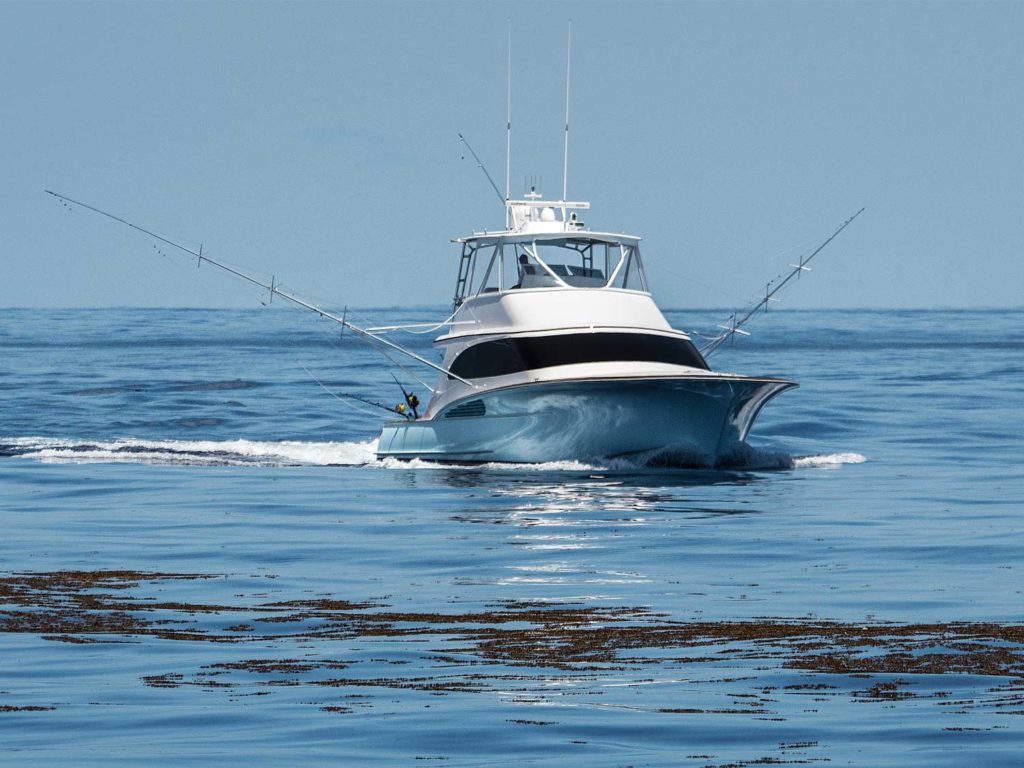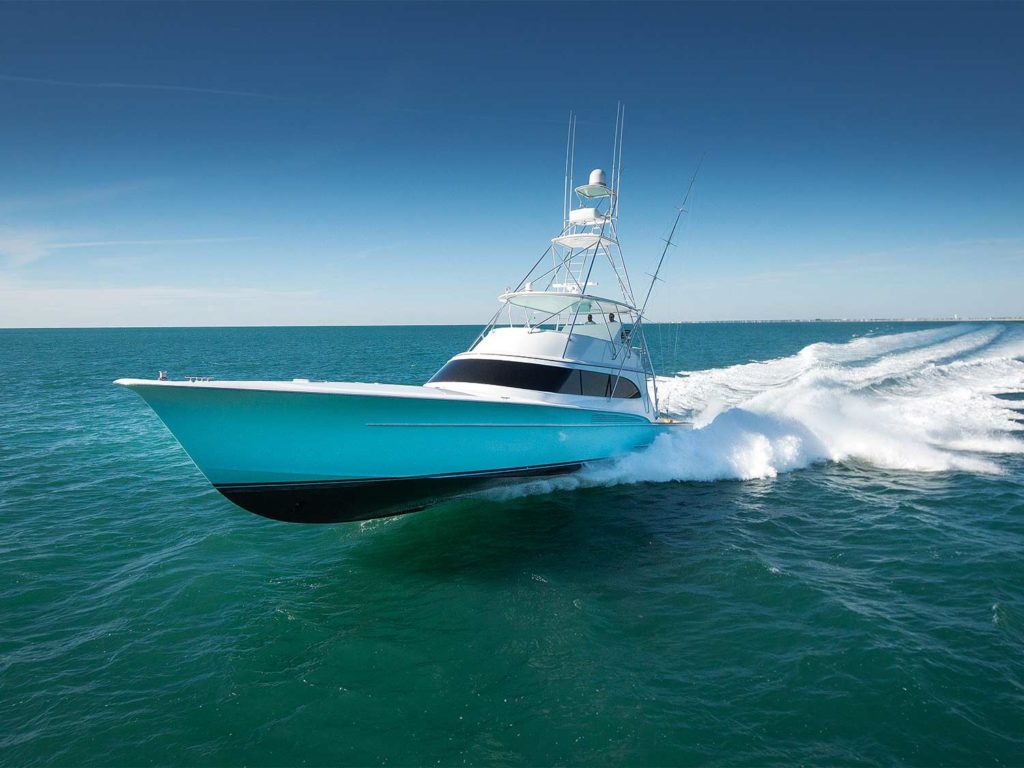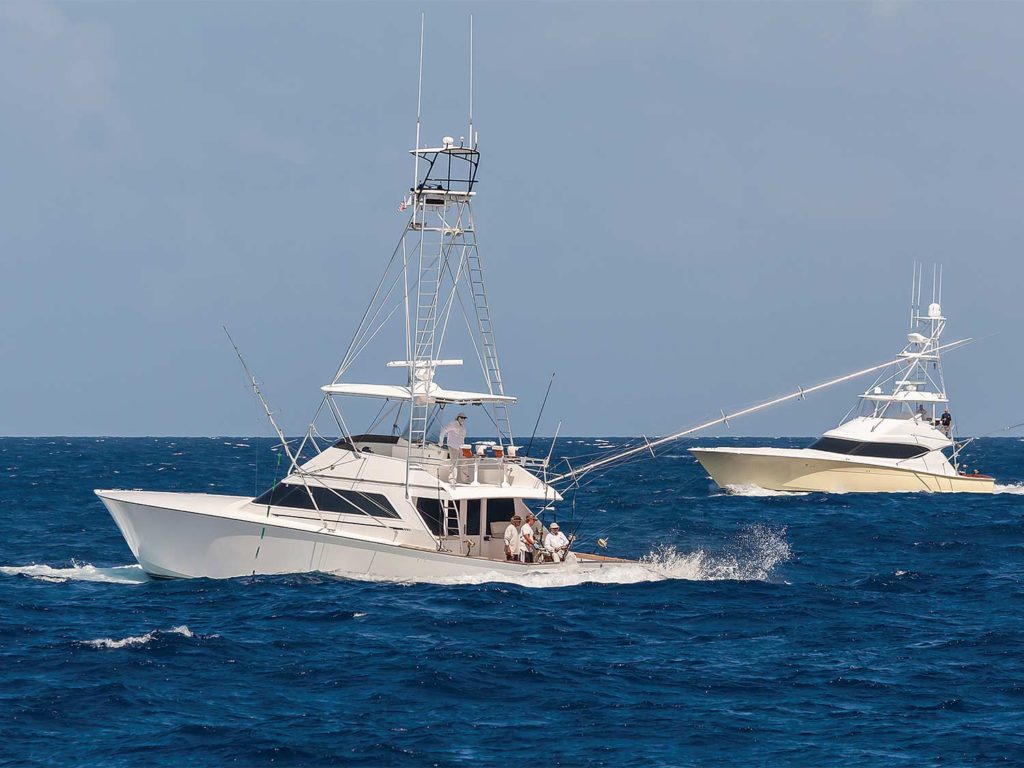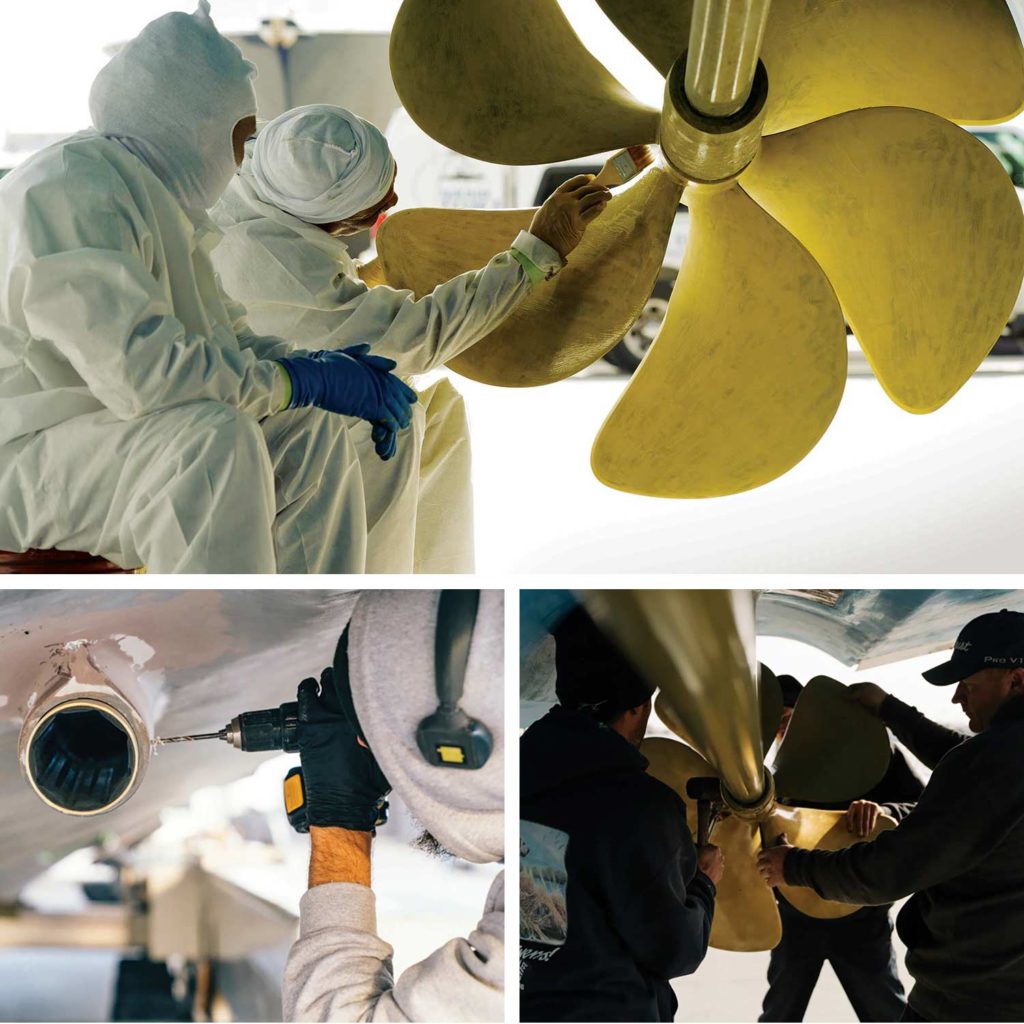
You’re trolling a ledge, seamount or baitball with a handful of boats around you. No bites yet, but you’re steadily marking fish and making several passes over an area that should be producing. Then you notice white water exploding behind a boat just a few hundred yards away; they suddenly stop, and you look to see a blue marlin taking to the sky. Woefully you shout down to the cockpit, “Hooked up south of us!”
As the day wears on, you notice that same boat hooking up several more times, and you haven’t even had a knockdown. Listening to the radio chatter, the fishing sounds slow, but that one boat seems to catch well more than you and the rest of the fleet.
Heading home, you wonder what kind of voodoo they were practicing or what different techniques they were using to get all those bites. Later, when you chat with the skipper at the dock, you find out they were using the same techniques as you—pulling the same style and make of lures, or using the same baits. You think to yourself, Lucky boat. It would be easy to theorize that it was simple luck that brought them all those bites, but I disagree.
I tend to push aside unexplained chance such as luck or superstition, mainly because there is no way to replicate it for success; either one is just a random force we have no control over. What we can control is our location, boat, crew and tackle, and if we take a more scientific approach, we can home in on certain areas that could possibly help us outperform our competitors.

The Science
Over the past decade, I have fished several boats in various locations throughout the Pacific, and in that time, I have noticed—and heard about—certain boats that, despite changing personnel, continue to see more fish than others. I really began to focus on those boats and question what makes them raise more than others in the fleet.
I believe there are several key ingredients to a fishy boat: sound/harmonics, electrolysis—or lack of stray electrical current—vibration, knowledge and skill, as well as time over target.
Before exploring what a fish-raising boat should sound—or not sound—like, we need to understand what is known about fish hearing and what sixth sense pelagics use to hunt and locate prey. Unfortunately, with all the research on fish hearing, we still do not know what magic sound we could produce to turn our boats into fish magnets, or even what modifications we can make to produce it. We do know, however, that tuna favor low-frequency sounds, with the 500 Hz frequency being most favorable, and that they generally do not react to sounds outside the 200 to 800 Hz range.
Watch: We used a chopsaw to deconstruct three brands of wiring gloves.
I think the most important takeaway from these studies is that all species of tuna, and most likely marlin due to their similar anatomy, can detect these lower frequencies and hear our vessels from a long distance. It is also probable that they do not like loud, sudden sounds, such as those produced by engines that aren’t in sync.
Based on that, it’s safe to assume that boats emitting sounds in the 200 to 800 Hz range will raise more fish than others. But until scientists can formulate this magic sound, we must rely on boatbuilders, prop shops, and seasoned captains to get a handle on the possible factors that could prevent your baits and lures from getting bit, and to keep any rattling sounds to a minimum.

Inspection
I began going through the long process of making my own boat more attractive to billfish when I first started running my 37-foot Merritt, Benchmark. The boat had just been transported to Kona, Hawaii, via container ship from Samoa, and we began fishing immediately, hoping to salvage what was left of the season. Everything seemed to be in place, but about two weeks later, the fish just stopped biting for us. We would mark fish, but they wouldn’t come up to investigate, and worst of all, we often would be working an area for hours while another boat would come into the same area and hook up immediately. Another month passed, and I started thinking that there was more to this cold streak than just bad luck.
We hauled the boat; I grabbed a notebook and began inspecting. What I discovered had me ultimately make some very big changes.
I found that one of our struts had been slightly bent out of place during shipping, which caused stress and wear on the transmission, as well as misalignment, vibration and a high-pitched whine. I also noticed that the rudder bearings had worn to the point of having enough play to make their own excessive vibration.
After addressing the running-gear issues, the boat went back into the water almost a month later, and we were rewarded on our first sea trial by getting piled on by a 500-pound blue marlin. And from that point on, the boat was getting bit again.
Getting to know your boat’s individual sounds and vibrations allows you to immediately notice any changes, taking note to address it at your next haul-out—something you should be doing at least once a year.
Avoiding the Slump
Before creating a checklist of things to look at while in dry dock, I wanted to talk with Tarheel captain and boatbuilder, John Bayliss. He has had a lot of experience in not only creating some of the best-biting boats trolling the rip, but he has also helped rebound some boats that have fallen into an incessant slump.
As we talk, it becomes apparent that Bayliss is a true believer in the some-boats-just-bite-better-than-others theory. He points out that with all the time and money that goes into catching marlins and other large pelagics, it would be almost irresponsible for a captain not to try to learn the sounds of his own vessel with the same amount of effort he puts into tackle, electronics, bait and teasers. “A good captain can catch fish on any platform, but if you put that same captain on a boat that’s dialed in and tight, his numbers would likely increase,” Bayliss says.
I ask his thoughts on that magic sound, and his answer is congruent with the scientific findings discussed earlier: “There is no specific sound that will attract fish, but there are sounds that can repel them,” he says.
Bayliss feels that any kind of stray, unusual noise or misalignment hinders a boat’s ability to get bites. He also says that oftentimes people will bring boats into his yard saying that they are just not getting bit like they used to, or that suddenly, bites occur only on the long riggers, while the flat lines go untouched. After going through the boat, he finds it’s usually more than a single issue that points to the cause, so his team will start checking bearings, rudders and shafts, as well as making sure the props are in tune and balanced. Once these items are in spec, they will go about meticulously getting the boat tight and back to its original sound, so when the boat splashes, it’s like a brand-new sport-fisher. “The results are almost immediate, and the customer is happy to have the boat getting bit again,” Bayliss says. “I believe in the mental aspect too. When the boat is right, the captain can fish more confidently.”
Read Next: Show your outriggers some love with these tips and techniques.
He compares this back-to-basics process to the new-boat theory. Have you ever noticed how often a new boat seems to get bit like crazy in its first few months of fishing? This is possibly due to how tight the boat comes out of the box: It’s in perfect alignment and the bearings are new, with no unwanted vibration or odd sounds.
Bayliss mentions that some boats, by design, might be at a disadvantage to begin with. Some boats just have vibration feels when you jump on them, and those acoustics are going to carry through the hull. “But any boat can be productive as long as it’s properly tuned, with a good crew, of course.”
After speaking in-depth with Bayliss, I really feel there is a lot more to boat sounds than I originally thought, and that many people assume. “We have never found fish where there were no fish, and a skilled crew with a tight boat in a good location is tough to beat,” he says. It certainly is a very convincing point that if you put a good captain on a good-sounding boat, he can become a great captain—if he can keep it sounding that way.

Propeller Noise and Vibration
Props are a big part of having a boat that emits a perfect sound. I ask for the advice and input from leading propeller specialist Mark Tomlinson, of Precision Prop Technology in Fort Lauderdale, Florida, about what captains should look for when it comes to billfishing and propellers. He replies by saying both propeller design and accuracy demand our attention.
“It’s important the propellers are designed for fishing. Sportboat propellers are like Ferrari tires: They need to be sleek and suited specifically for that purpose. Whenever purchasing new propellers, order from a manufacturer that fully CNCs their models. Whenever a propeller needs to be altered or repaired, take it to a facility that uses modern equipment, computers and current repair techniques, and always get a computer printout—or Prop Scan—showing the condition of the propellers before and after the repair,” Tomlinson says, stressing that accuracy is the tipping point, especially after a repair has been made to one.
“Props and running gear need to be free of sharkskin and marine growth to avert vibration and to function as designed, and if antifouling coatings are used on the propellers, they need to be applied correctly,” he continues, noting that some coatings will cause issues if the product is applied too thickly on the edges, particularly on the trailing edge. This can cause an unwanted high-pitched noise phenomenon known as singing, which is similar to the sound of running your wet fingertip around the rim of a wineglass.
Propellers should not only be pitch-balanced to ISO 484/2 Class-S tolerances, but they should be static-balanced and ISO 1940/1 dynamic-balanced also. Doing so will help the propellers turn as smoothly as possible through the water.
“Every boat has an ideal propeller design when it comes to diameter, pitch, blade area and number of blades,” Tomlinson says, “and I don’t find that randomly adding more blades—or taking blades away—makes for better fishing or a cleaner wash. The propeller dimensions need to fit that particular vessel.
If we think of a propeller as a gear, then we need to get the gearing correct, and try to customize the propeller’s dimensions to fit the vessel’s characteristics.”
Tomlinson also points out that propellers need to have the correct clearances—tip to hull and prop to rudder—and that having the prop’s tips too close to the hull is not a good scenario at all for successful fishing. It would seem that paying attention to these small details in regard to prop consistency also nets the best results.

Bad Alignment and Rudder Play
Your boat is aligned correctly when the engine mounts are in good condition and the engine itself is situated in a position where the shaft connects to the transmission and the engine with limited or no constriction. On smaller sport-fishing boats in the 37- to 50-foot range, if I can turn the prop with two fingers, then I’m happy with the tightness of the cutlass bearing and the alignment of the shaft.
Cutlass bearings that fall out of tolerance—sometimes causing a whine we can hear from above the waterline—need to be replaced in order to ensure good performance. High-performance sportboats are prone to vibration issues should the maximum tolerance reach between 0.010 and 0.011 inches, for example, say the experts at Jarrett Bay Boatworks, and that it is not recommended to operate a vessel with bearing wear reaching maximum tolerance or with a continued vibration.
Another primitive but trustworthy test I use to see if my alignment is off is to set a few rods in the rod holders and one up on the bridge. While at trolling speed, I turn hard to port, watching the rod tips. The vibration of the tips should be minimal to almost nothing; then I turn hard to starboard. If at any time during this process they begin to vibrate heavily, then you could have an alignment issue, which is generally a relatively easy fix. Most mechanics can fix your alignment with ease, but it’s up to you to keep an eye on your engine mounts. Just one worn, loose or collapsed mount could spell disaster for your fish-raising ability—including unwanted transmission whine that travels down the shaft and into the water—not to mention that a misaligned engine can cause all kinds of other mechanical problems if left in disrepair.
Rudders that move around freely in their bearings also need to be addressed. If you can grab the rudder and wiggle it back and forth or up and down, you should get the issue fixed. Rough seas, hard turns and the turbulent water your props push past the rudders are more than enough to vibrate them loose and cause an unwanted racket. Allowing the rudder to sail around in its bearing also puts you at risk of losing your rudder entirely, shearing off on the rudder shaft. Accidents happen, but limping into the boatyard with a broken rudder shaft could indicate the bearings had been loose for a period of time and is most always avoidable by simply taking care of regular maintenance issues such as running-gear inspections.
All of this tech talk becomes much clearer knowing that water is a great medium for sound; not only is sound louder underwater, but it also travels up to four times faster in water than in air. Sound waves also travel faster in the upper part of the water column, so staying away from any kind of tone not normally associated with the synced hum of a diesel engine is a good idea if you want to keep your boat fishy.
So if you’re not getting bit like you used to while your fleetmate is racking them up, try eliminating that squeaky belt, whining cutlass bearing, or even those clanging scuba tanks in your fish box. Doing so could be just enough to get you a few more bites and raise the one you’ve been looking for.







